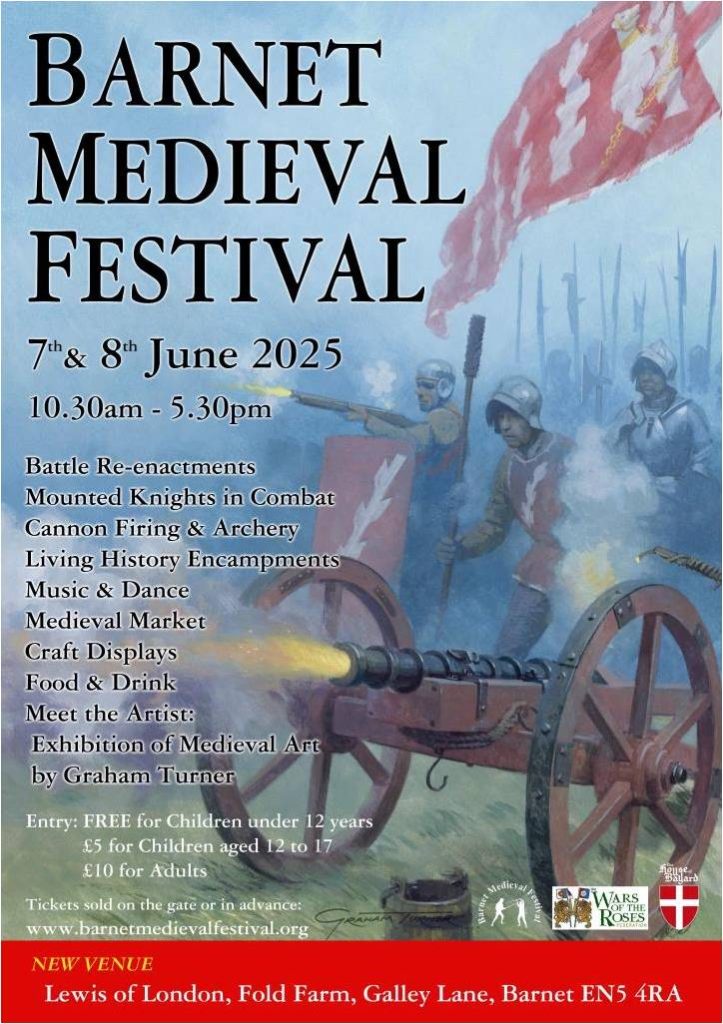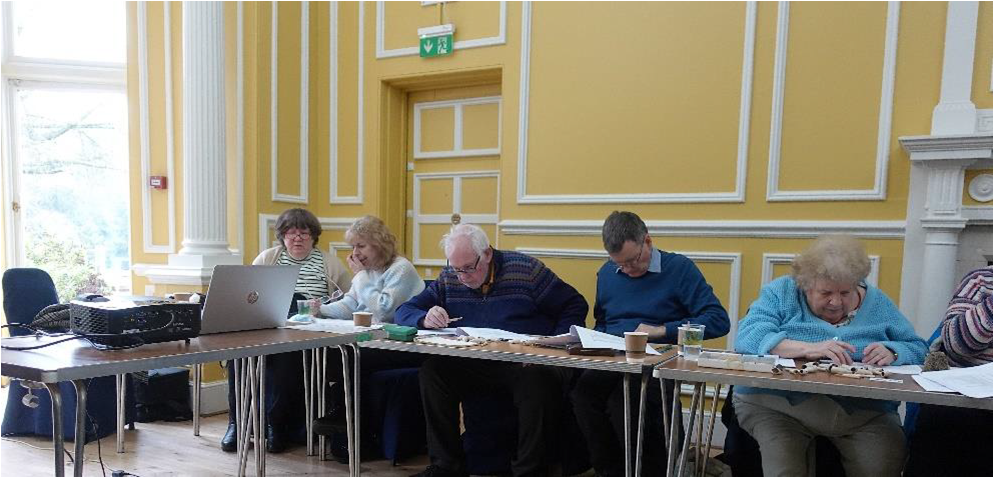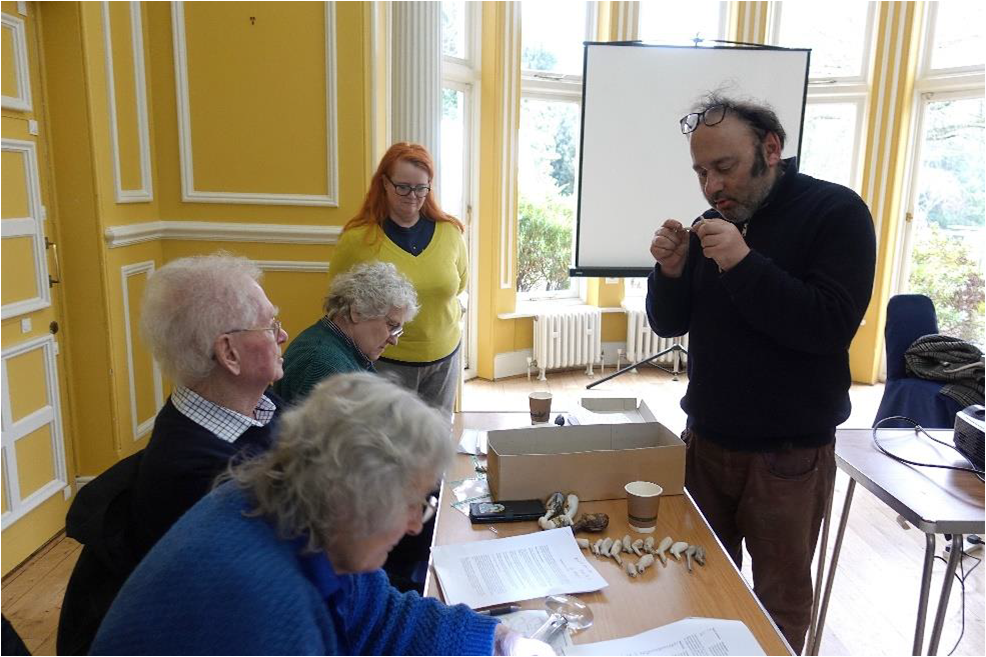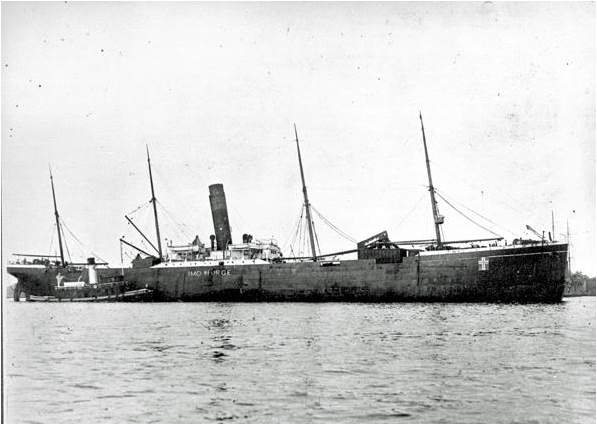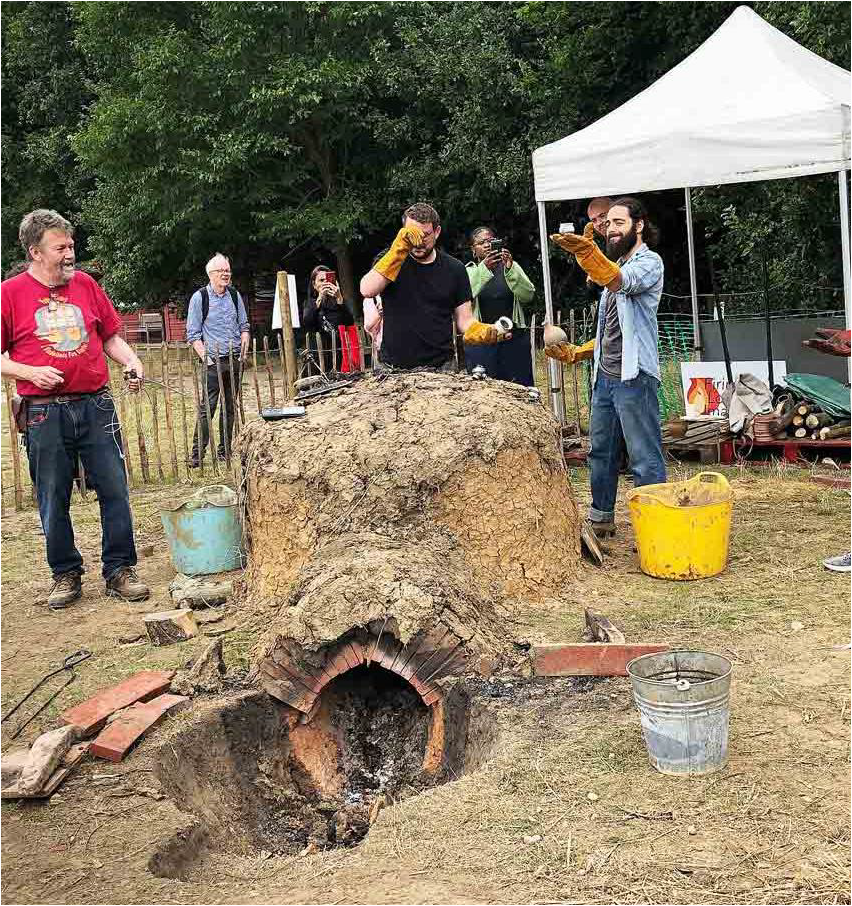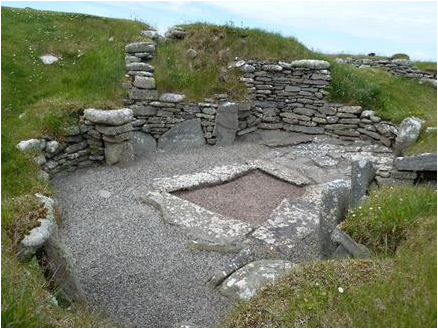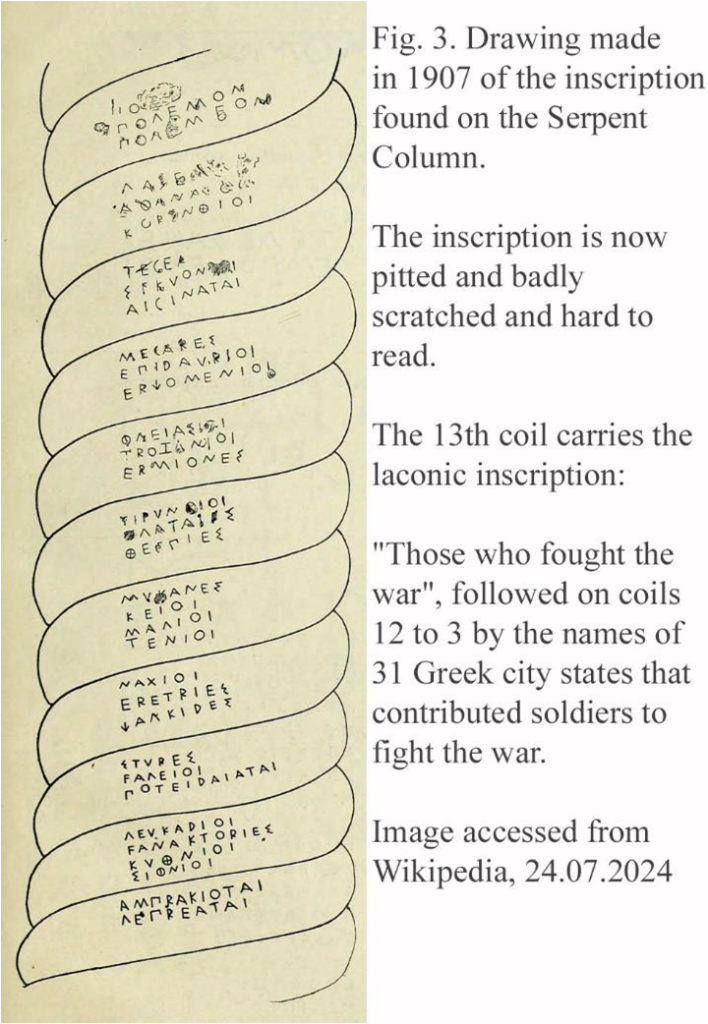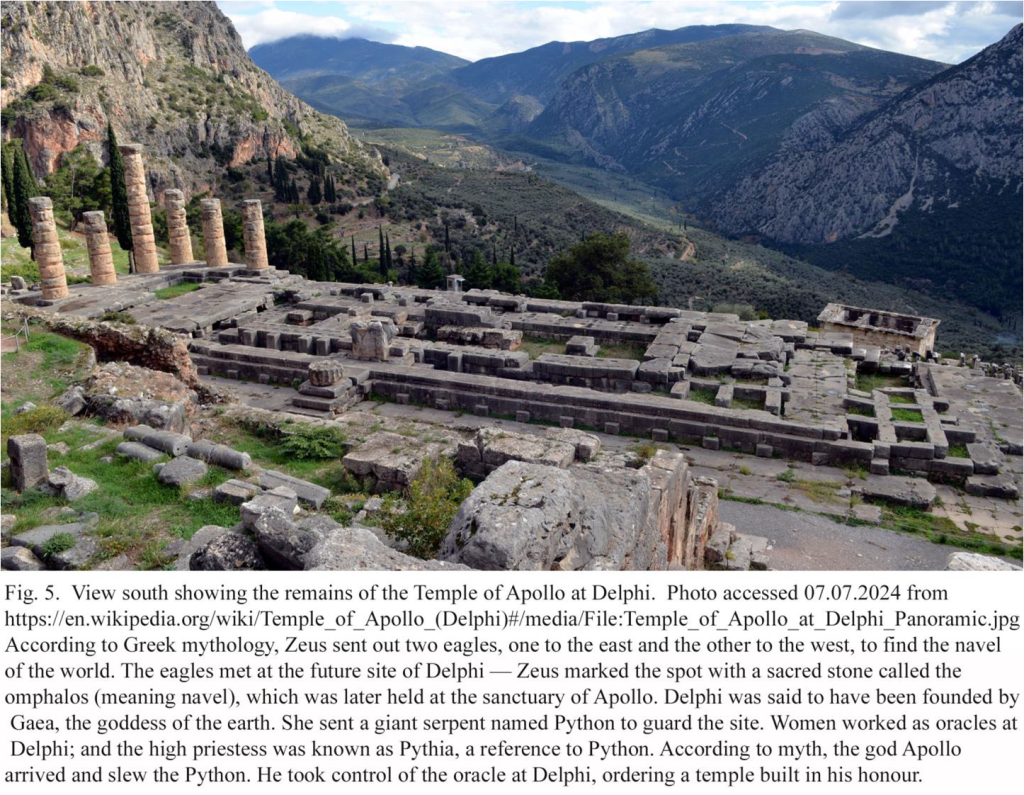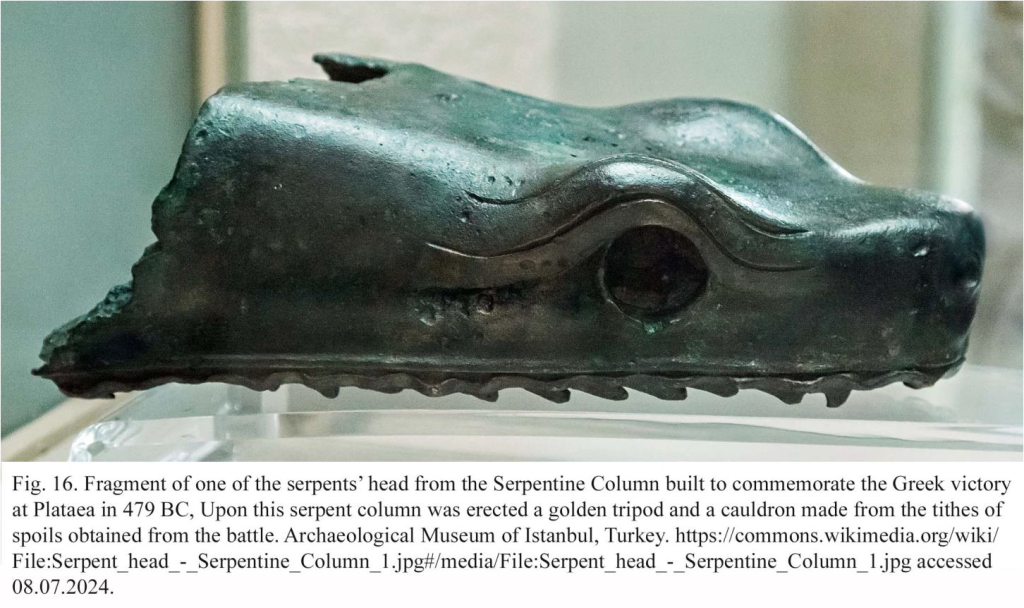
No. 652 July 2025 Edited by Melvyn Dresner
HADAS DIARY – Forthcoming Lectures and Events
Tuesday September 9th 2025
The September lecture will take the form of a guided walk in the City of London led by Dr. Jane Sidell
(Historic England – Principal Inspector of Ancient Monuments).
Places will be limited and will need to be booked in advance. Further details will be available nearer the
date. email chairman@hadas.org.uk.
Tuesday October 14th 2025
Dr. Wendy Morrison – “Our Cross to Bear: Chalk carvings in the Central Chilterns”.
Tuesday November 11th 2025
Dr. Signe Hoffos – “Lost Churches of the City of London: 500 years of City churches lost to fire, war and
urban redevelopment”
Lectures held in the Drawing Room, Avenue House, 17 East End Road, Finchley N3 3QE. 7.45 for 8pm.
Buses 13, 125, 143, 326, 382, and 460 pass close by, and it is a five-ten-minute walk from Finchley Central
Station on the Barnet Branch of the Northern Line where the Super Loop SL10 express bus from North
Finchley to Harrow also stops.
Tea/Coffee/biscuits available for purchase after each talk.
HADAS AGM 10th June was attend by 25 members, the meeting was chaired by Jacqui Pearce, our
President, Sandra Claggett was re-elected as Chair, Peter Pickering as Vice Chairman, Janet Mortimer as
Honorary Secretary, Roger Chapman as Treasurer, Jim Nelhams as Honorary Membership Secretary, Bill
Bass stood down as Field Officer, and will greatly missed in that role, he was thanked by all at the AGM,
and he also left the committee. The new elected committee member, Catie Teodorescu has agreed to take on the role of Field Officer. In addition to those mentioned above, the following committee members have agreed to continue serving that is Don Cooper, Robin Densem, Melvyn Dresner, Eric Morgan, Jo Nelhams, Susan Willetts and Susan Loveday.
Vine Cottages Greyhound Hill, Hendon Roger Chapman
HADAS will be excavating a site opposite the Greyhound Public House in Hendon between Thursday 31st July and Monday 4th August as part of the Festival of British Archaeology.
https://www.archaeologyuk.org/festival/festival-event-listing/vine-cottages-excavation.html
The site is now a small Barnet Council run open space, but it is known that Vine Cottages existed on the site and was demolished in 1937, The water colour and photo below (both Courtesy of the London Borough of Barnet archive) show what existed.
1


The objectives of our excavation are to:
1. Establish the phasing, uses, occupation and development of Vines Cottages.
2. Establish likely date of construction of Vines cottages’
3. Establish whether there is evidence of earlier building and uses on this site.
4. Understand the wider context and setting of Vines Cottages drawing on previous historical and
excavation work undertaken by HADAS and others.
2
Do come along and see the HADAS excavation in action, – and then have a quiet reflection on it in the Greyhound Public House opposite.
If you want to know more do drop a line to Roger Chapman at; roger.chapman99@btinternet.com.
Roger and his wife Kate Brown, both recently received Barnet Civic awards, more info here:
http://www.the-archer.co.uk/archive/2025/2025Jun05.pdf. Well done to Roger and Kate.
Church Road, Hendon, NW4, HADAS Excavation 2024, Site Code CVA24 (Part 1) Bill Bass
Previous mentions of this dig and the site’s history need to be referred to in conjunction with this report,
please see Newsletters December 2024 (for an overview by Andy Simpson including photos and an
illustration). Also, a further illustration of buildings known on this site was published in the February 2025
issue of the HADAS Newsletter and further details were given in the April 2025 edition. A comprehensive
project design proposal written by Roger Chapman (RC unpublished) will be referred to.
The site owned by Barnet Council (now re-landscaped) was a small incidental open space with grassed
areas, paths and seating. It abuts the east end of the Grade II Listed Building of Daniel Almshouses. It lies
opposite the Claddagh Ring pub on Church Road. The east of the site is bounded by Wroughton Terrace and the historic footpath of West View which runs through this part of Hendon (RC).
The project aims included identifying any remains of the former 18th century Bennet’s Schoolhouse which
stood on the site and any earlier archaeology as Roman, Saxon, Medieval remains are known not far from
the site. As the site fronted directly onto the pavement we could engage with the public as to what we were
doing and further encourage people to join HADAS, several newer members did join us on this excavation.
The dig took place on 6th– 8th September, a baseline was established using the east wall of the Almshouses from which 3 one metre square test-pits were laid-out, some of these were later slightly extended. These were an attempt to find some of the wall foundations as see on various maps and illustrations.
Trench 1
The turf at 84.16 OD covered topsoil approx. 12cm deep which contained finds such as pottery, bone,
glass, clay tobacco pipe and slate pencil frags, then revealed beneath a likely demolition layer 10-20cm
thick, a silty-sand clay context which included various building materials. Below this was contexts 003 and
004 both mortar-based layers 10-20cm thick with brick and tile, possible bases of a floor. Below this was a
3
clay context approx. 10cm thick containing ceramic building material (CBM) and bone. Within these mortar and clay layers in the northwest section was a red-brick wall foundation in English Bond about 50cm long E-W and 4 courses high and around 25cm wide (see page 5 of December 2024 newsletter). There were slight indications of a south return of this wall although heavily disturbed. Opposite the wall stub and at the same level (approx. 45cm below the turf line, 83.81 OD) in the SW corner was a dump of roof slate lying horizontal as if laying on a mortar floor. Associated with this was a considerable amount of brick rubble. The bottom of the trench was reached at approx. 75cm deep, 83.54 OD where clay with pebbles indicated where the natural clay started. The wall above also rested on this clay level.
Trench 2
This 1m sq. trench (later extended 50cm south) was placed some 13m east of trench 1 and further to the south. The ‘topsoil’ 001 was cleared down to around 25cm below the turf line 84.05OD, it was a mixed deposit of sandy clay soil with patches of mortar and burnt material containing pot, bone and ceramic building material (CBM). At this level a further wall was encountered running E-W, the lower 3 stepped foundation courses consisted of red-brick 44cm wide with a further 2 courses on top being 30cm wide, again all in a form of English Bond. In the south side of the wall an ‘indentation’ 25cm wide had been carved into the side of the wall and foundation structure for an unknown purpose (see page 6 photo of December 2024 newsletter). To the north side of the wall again a mortar floor like deposit 4-6cm thick abuts the top of the masonry, below this was an 18cm thick make-up, possibly a grey-black humic buried soil, this sat above natural clay some 72cm below the turf line. The equivalent on the south of the wall was a 45cm depth of brown clayey sandy soil with pot, bone and CBM resting on the natural clay.
The mortar floor context north of the wall indicates this is inside the building while the buried garden type soil points to this being outside possibly in the garden.
Trench 3
Another 1m square trench (again later extended 50cm south) trench was positioned in the SE corner of the site to pick-up what building foundations could be detected there and it was in the vicinity of an historic footpath which connected St Mary’s Church to the centre of Hendon. The 30cm of topsoil was cleared down until the SW corner of a structure was uncovered with its associated mortar floor, again indicating the inside and outside of the building. The plan of the wall and floor was largely similar to those of the other two trenches, it was decided not to excavate further as this gave a good view of how the demolished structures looked. The sampled brick detail here measured: 22cm long, 10cm wide, and 9cm in depth, the bricks were frogged (see Building Material report forthcoming). On the outside of the N-S wall it looks like a brick was removed with something inserted (now disappeared) supported by a metal-tie and roof tile wedged in, a post-demolition post support (?) or similar. (see page 7 photo of December 2024 newsletter). The mortar floor is roughly made-up of brick frags, roof slate and stone with a partial mortar covering, an intact stoneware inkwell bottle was found contained in the mortar floor.
Trench interpretation
The archaeology shows that all the buildings on site were demolished in 1937 to a uniform level (approx. 83.80 OD) with about 5-6 courses of the foundations left, these spaces were then packed with some of the demolition rubble and finds (see below). A rough mortar floor appears to have been formed over the rubble to the same level as the top of the demolished foundations. Gradually the site became covered in topsoil and a small public space was formed with benches, paths and flowerbeds.
It is possible that the substantial E-W brick wall found in trench 2 is for the rear wall of the east gabled (central of three) blocks, while the wall footings in trench 1 are part of the lower gabled building (with porch) situated between there and the still extant almshouses. (based on Andy Simpson Feb 2025 newsletter). The return wall foundations seen in trench 3 appears to be the rear of the eastern outer block adjacent to Wroughton Terrace and the historic footpath of West View.
4
Although only test-trenches there was no evidence of earlier structures or archaeological interventions other than the 18th century seen.


members are engaging with the public. For further site photos please see the December 2024 newsletter.
Further instalments will include the finds and phasing of the site.
5
Community Excavations at Cranford Park – Talk in May by Les Capon from AOC Archaeology
Sue Willetts
Les was a very engaging speaker and gave us a good overview of the work done on a a community /
Heritage Lottery Funded excavation at Cranford Park (just north-east of Heathrow Airport) and owned by
the London Borough of Hillingdon. In 2018 work began on evaluation trenches which led to further work
over 4 seasons involving a small group of volunteers, during the week, rising to over 50 at the weekends
included many returning each season until 2024 culminating with a Heritage Open Day Festival.
The volunteers – over 100 in total were not only digging but also photographing and recording with training / guidance from the professional team. It was so good to hear about the dedicated / enthusiastic volunteers and how they had connected with the history of their local area through this community project. An initial GPS survey produced was useful in planning the excavations which found that there had been occupation in the area since the Bronze Age right up to the 19th century. Les explained the post-hole evidence which indicated Romano British round houses and later Saxon houses. Later buildings showed medieval, Tudor and post-medieval remains with intact cellars.

The history of Cranford Park is bound up with the the Berkeley family who owned it for over 300 years,
starting with Lady Elizabeth Berkeley, a cousin of Queen Elizabeth I. Successive generations expanded and
upgraded the manor house and its gardens, but in time the family moved away and much of the land was
sold off for house building.
Excavations found that there was a later phase of Tudor walls belonging to the original manor house found towards the southern half of the excavation area. This had an associated demolition layer which included glass and lead strips from windows, green glazed floor tiles, roof tiles, and shaped bricks from windows – all indicative of a Tudor date. Beneath the demolition debris, the latest 19th century phases of Cranford House were revealed. This included projecting bays, the main threshold to the house, a gravel pathway and flowerbed edgings.
A large park remains with a surviving 18th century stable block will be restored with a new cafe and
playground. The underground cellars will also be restored and converted into space for community events. Test pits revealed the tops of the cellars, and an additional barrel-vaulted chamber which has no visible entrance from within the existing cellars themselves which is intriguing. AOC and Les Capon are proud to have been a part of this project which will have an important impact on the local community.
For anyone who missed this talk, there is a version of it with slides recorded by LAMAS and available on
YouTube:
https://www.youtube.com/watch?v=tg0R67bADG0.
For this summary, I have used some information from AOC’s website, https://www.aocarchaeology.com/news/community-excavations-at-cranford-park.
6
Mini ice age ‘had pivotal role in fall of the Roman Empire’ Stewart Wild
A “Little Ice Age’ in the sixth century was so intense that it may have been the “primary driver” in the fall
of the Roman Empire, scientists believe.
Between 536AD and 547AD, three massive volcanic eruptions blocked out the sun and ushered in a rapid
period of cooling that saw average temperatures fall by several degrees. Researchers at the University of
Southampton have found that the mini Ice Age was so intense that it moved rocks from Greenland to
Iceland.
The scientists found smooth rounded rocks known as “cobbles” on the beaches of Iceland’s west coast which must have been carried on icebergs from Greenland. It suggests that the cooling event sparked changes even more widespread and severe than previously thought, causing major climate upheavals in the northern hemisphere that probably played a pivotal role in the collapse of the Roman Empire.
“When it comes to the fall of the Roman Empire, this climate shift may have been the straw that broke the
camel’s back,” said Prof Tom Gernon, co-author of the research and an earth science professor at the
University of Southampton.
“The Roman Empire was likely already in decline when the Little Ice Age began. However our findings
support the idea that climate change in the northern hemisphere was more severe than previously thought. Indeed it may have been a primary driver of major societal change, rather than just one of several contributing factors.”
The period of cooling lasted around 200 to 300 years and is known to have coincided with a period of
widespread social unrest across Europe and Asia with crop failures.
The findings are published in the journal Geology.
SOURCE: Daily Telegraph, 9 April 2025.
Viking treasures found in cauliflower field Stewart Wild
A Viking hoard of gold objects was found in a corner of a ploughed field of cauliflowers by a metal
detectorist. Maurice Thomas discovered the fourteen objects between February and April 2020 in the
Penrith area of Cornwall, an inquest in Truro has heard.
Assistant coroner for Cornwall Guy Davies said that the objects were probably from the Viking period. Mr
Davies added that not all the objects could be dated but may have come from between the mid- to late
Bronze Age between 1300 and 1000BC.
Both the finder and landowner will receive rewards as all treasure found in Cornwall belongs to the Duchy
of Cornwall.
SOURCE: Daily Telegraph, 13 April 2025.
7
The Highgate Wood Kiln’s Site Melvyn Dresner
Nick Peacey MBE, secretary of Friends of Highgate Roman Kiln gave the 11th February 2025 lecture on Highgate Kiln. The article in November2024 issue of the HADAS newsletter (NL No.644) gave the story of the kiln. The slogan is firing London’s imagination, with ambition to inspire people of all ages to explore, engage with and enjoy every aspect of the kiln’s story.
Highgate Wood’s Roman pottery site is hugely significant. It is a rare Roman pottery factory from Greater
London. It’s also an important part of Highgate Wood’s history and that of the Borough of Haringey,
particularly as little other evidence for Haringey during the Roman Period has so far been found. The kiln
was discovered by archaeologists Tony Brown and Harvey Sheldon in 1967 after a following up on dense
scatter of Roman pottery.
Nick explain how he was first associated with experimental archaeology in Highgate Wood since building
and firing reconstructions of Roman kilns there as a young teacher. The first experimental kiln was set up in 1971, six kilns were built up to 1973. Bruce Castle Museum initiated the Haringey Potter in 2010 part of the 2012 London Cultural Olympiad where Kiln 2 was kept. On 27th August 2024 the Roman kiln was returned to Highgate Wood, and can visited almost every day of the year, with plans to improve the visitor in 2025 and 2026.
News story: https://youtu.be/N-TlsMigoCA?si=sqpeNpPrfjQcEi4N.
Film made of the original firing in the 1970s: https://youtu.be/pff4AS3b_WE?si=wtti9nG6Nih9AaMh.
Nick read classics at Oxford University. Most of Nick’s professional life has been spent on national and
international work in the field of special educational needs and disability (SEND). He is a Fellow of the
UCL institute of Education Centre for Educational Inclusion.

8
HADAS as we have for a few years, had a stall at the Barnet Medieval Festival, 7th and 8th
June 2025. There were volunteers from HADAS including Sandra Claggett, Bill Bass, Andy Simpson and Eric Morgan.Here are some photos from the day:
Newsletter contributions welcome
In order to keep our monthly newsletter going, we welcome contributions. Please help us by sending us an article, or perhaps just a paragraph or two about something relevant you have found of interest. You can even just send us a comment about one of the previous articles – all contributions gratefully received!
Please send contributions to the next editor, details at the end of this newsletter. Thank you!
9
Fancy a coach break?
HADAS committee has been researching ideas for a 4- or 5-day coach break in the UK most likely not too
far from London for our first excursion after a few years break. As some of you will remember we did used
to have coach trips in the past and we are hopeful of starting this practice again this will depend on there
being enough interest from members. To see if there might be enough people to make this feasible an
expression of interest sheet was available to sign after our May lecture and will be available after our other lectures. We have some signatures already which is good. If you are not able to attend lectures and wish to express an interest please email chairman@hadas.org.uk.
At a further date we will be emailing those who have said that they are interested and have provided their
email details a suggested itinerary and price based on numbers attending. It is likely that the trip will be
early on next year.
OTHER SOCIETIES’ EVENTS
Other Organisations / Societies’ events Eric Morgan
As always please check with the societies’ websites before planning to attend since not all societies and
organisations have returned to pre-covid conditions.
Sunday 6th July – Sunday 20th July. Enfield Archaeological Society – Elsyng Palace Excavation in the grounds of Forty Hall, Forty Hill, Enfield. EN2 9HA. This 21st year will focus on revealing more of theInner Gatehouse of the Palace, following the previous excavation of its turret-flanked pedestrian entrance.To join the dig please contact research@enfarchsoc.org or visit www.enfarchsoc.org or email martin.dearne@talktalk.net and if you are not already a member, please join (cost £12) by 20th June 2025. On Saturday 12th July 11 am. – 4 pm. there is a public Open Day.
Tuesday 8th July, 8 pm. Amateur Geological Society. Finchley Baptist Church Hall, 6 East EndRoad/corner Stanhope Avenue, London. N3 3LX (almost opposite Stephens’ (Avenue) House) –The Evolution Garden –uncovering a history of plants. Talk by Dr Paul Kenrick (Natural History Museum) who re-opened its gardens in South Kensington and has created an accessible and free green space. A keyfeature of the re-design is the New Evolution Garden – an immersive journey through 2-7 billion years of Earth’s history told through plants, geological features and representations of animals. Full details on www.amgeosoc.wordpress.com.
Monday 14th July, 3 pm. Barnet Museum and Local History Society. St. John the Baptist Church,Chipping Barnet, corner High Street/Wood Street, Barnet. EN5 4BW. The talk shown in the June Newsletter has been changed to The East End at War – Blitzed, Battered but Never Beaten by John Lynch. Please visit www.barnetmuseum.co.uk for further details. Refreshments to be available afterwards.
Wednesday 16th July, 2 pm. Heath and Hampstead Society. Guided walk of Hampstead’s Historic Plaques. Led by Carol Seigel. Meeting outside Hampstead Underground station and finishing at Burgh House approximately an hour and a half later. Cost is £10 paid at the start. To reserve a place please email events@heathandhampstead.org.uk.
Wednesday 16th July, 7.30 pm. Camden History Society. St. Mary’s Church, Elsworthy Road, Primrose Hill, London. NW3 3DJ. (The corner near King Henry’s Road). Streets of Primrose Hill and Regents Park. Book launch and talk by members of the research team, preceded by A.G.M. 7 pm. Please visit www.camdenhistory.org for further details.
Thursday 17th July, 11 am. Amateur Geological Society. Guided walk of The Natural History Museum’s ‘Evolution Garden’ led by Mike Howgate (A.G.S. Chair, meet at South Kensington tube, to reserve a place please email
10
mikeeh1086@hotmail.com. Also visit https://amgeosoc.wordpress.com for further details. This is a follow up to the talk on Tuesday 8th July shown in the June Newsletter.
Friday 18th July, 7 pm. C.O.L.A.S. St. Olave’s Church, Hart Street, London. EC3R 7NB. Talks also on Zoom. Members’ Night. Short Talks by C.O.L.A.S. members. Please book via Eventbrite. Visit www.colas.org.uk. HADAS may send out link details to its members.
Also on Friday 20th June, 7 pm. Across the pre-historic landscape of West London. Talk by Dr. SteveFord (Thames Valley Archaeological Services). Also on zoom (details as above).
Friday 18th July, 7.30 pm. Wembley History Society. St. Andrew’s Church Hall (behind St. Andrew’s New Church) Church Lane, Kingsbury, London. NW9 8RZ. Kingsbury – how it all began – Farms, Bridges and Churches. Talk by Councillor Ketan Sheth on following the development of the community of Kingsbury. Visitors request to pay £3. Refreshments to be available in the interval.
Monday 21st July, 7.30 pm. Enfield Society. Jubilee Hall, 2 Parsonage Lane/Junction Chase Side, Enfield, EN2 0AJ. Charles Lamb and Thomas Hood. Talk by Sara Lodge about their friendship, their similarities and differences and how the qualities of their writing blinded critics to the pointed political nature of their works. Please visit www.enfield.society.org.uk. Non-members charge £1 at the door.
Sunday 3rd August, London Canal Museum. 12-13 New Wharf Road, Kings Cross, London. N1 9RT.Ice Heritage Sunday. Celebrates all things ice and the history of the building, part of the Festival of Archaeology, including boat trips and Victorian ice cream making demonstrations and a chance to descend into the historic underground ice well. Please visit www.canalmuseum.org.uk. Normal charges.
Tuesday 5th August, 2 pm. Mill Hill Historical Society. History walk along the Ridgeway, Mill Hill. Led by Dr. Michael Worms (Society member) lasts 1.5 to 2 hours. Meet at the Old Forge (Junction of Holders Hill, Flower Lane and the Ridgeway. Finish near Mill Hill East. Book by Friday, 1st August. Contact Julia Haynes, 38 Marion Road, London. NW7 4AN. Phone 07803 892496. e-mail outings-mhhs@gmail.com quoting your name, phone number then e-mail and number of members and guests. Please visit www.millhill-hs.org.uk for further details.
Tuesday 5th August, 11 am. Enfield Society. Jubilee Hall (address as for Monday 21st July) Thompson and Bywater – Edwardian Justice on Trial. Talk by Doreen Taylor, about a Judge’s bias assumptions and a woman destroyed for morals and word crimes.
Wednesday 6th August, 8 pm. Orpington and District Archaeological Society. Talk on Zoom. Bartmann goes Global. When German Stoneware travelled around the known world in the C16th and C17th by Jacqui Pearce (HADAS President). This is a follow-up talk to the one she gave after our A.G.M. Details on website www.odas.org.uk on 16/7.
Tuesday 12th August, 8 pm. Amateur Geological Society. Finchley Baptist Church Hall, 6 East End Road, Corner Stanhope Avenue, London. N3 3LX. (Almost opposite Avenue House). A Conversazione Style Members Evening with the theme of Chalk Sea Ecosystems. Talks by Society members. Full details on www.amgeosoc.wordpress.com.
Thanks to our contributors this month: Eric Morgan, Stewart Wild, Bill Bass, Sue Willetts, Janet Mortimer, Roger Chapman and me.
11
Hendon and District Archaeological Society
Chair Sandra Claggett, c/o Avenue House, 17 East End Road, Finchley N3 3QE
email : chairman@hadas.org.uk
Hon. Secretary Janet Mortimer 34 Cloister Road, Childs Hill, London NW2 2NP
(07449 978121), email: secretary@hadas.org.uk
Hon. Treasurer Roger Chapman, 50 Summerlee Ave, London N2 9QP (07855 304488),
email: treasurer@hadas.org.uk
Membership Sec. Jim Nelhams, 61 Potters Road, Barnet EN5 5HS (020 8449 7076)
email: membership@hadas.org.uk
Website: www.hadas.org.uk
12


















